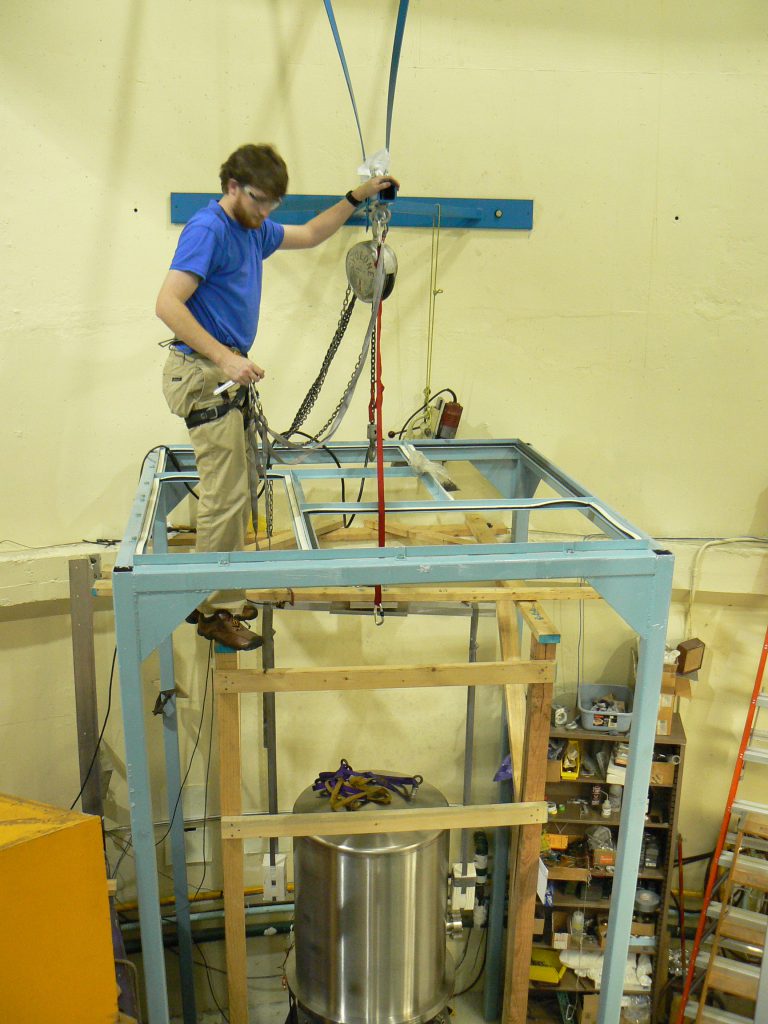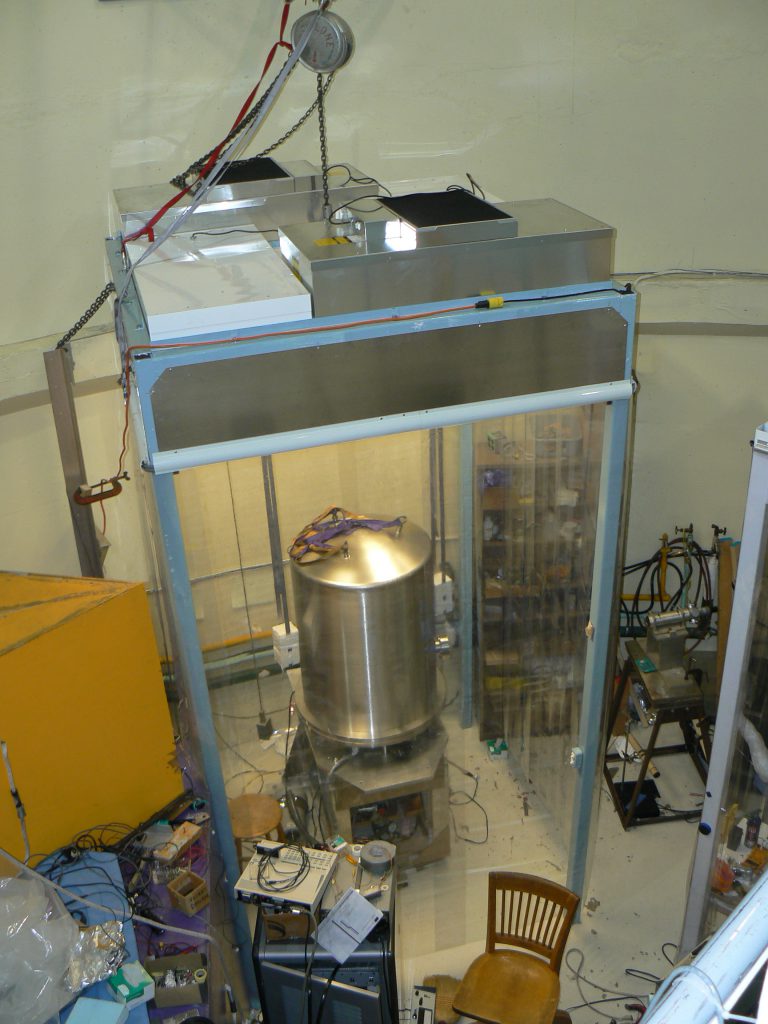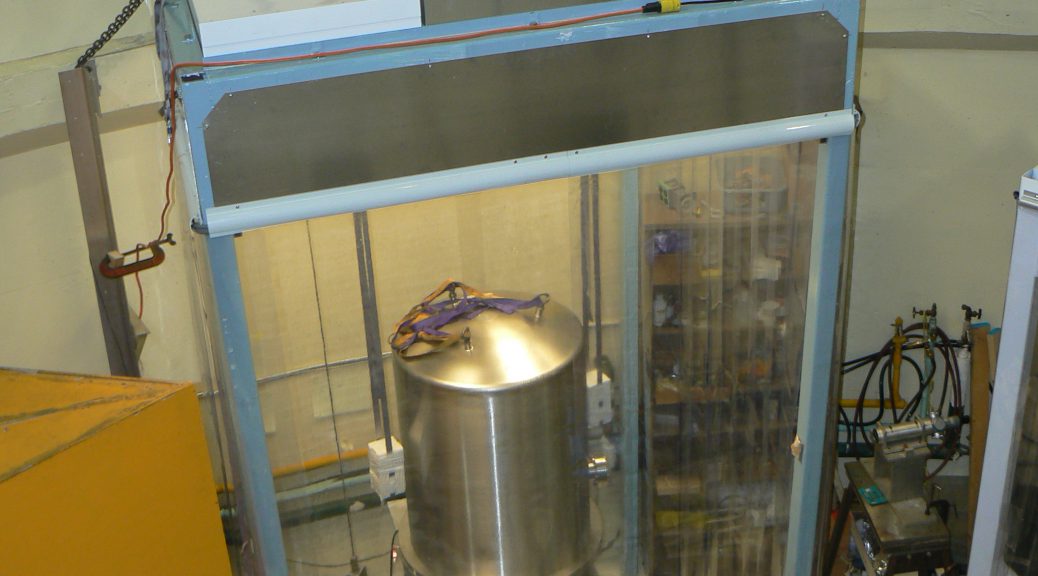One of the main areas of investigation in our research group at UW is the behavior of gravity at short distances. We have tested Newton’s inverse-square law down to distances less than 100 microns, about the average width of a human hair. These tests involve objects with dimensions of a few inches, with surfaces that must be brought into similar distances from each other. This requires that the surfaces be quite clean, as a speck of dust could prevent the surfaces from getting close enough to make the measurement we want.
We needed a cleanroom for a new experimental setup in early 2008. Although off-the-shelf and custom-built solutions existed, it made more sense for us to build our own. I researched the equipment and design factors necessary to achieve our target specifications, and designed a cleanroom that fit into the available space and accommodated the needs of the experiment, including a way to lift the vacuum bell jar using an overhead hoist. After getting it all designed, I ordered the parts and structural steel.
We welded the cleanroom frame together in two segments to enable us to bring it into the lab. I also welded a ceiling frame to secure the lights, fan & filter units, and a flexible membrane (i.e. large plastic bag) that allowed the chain hoist to lift the bell jar without introducing contaminants.
An existing wooden frame and the lab’s circular gantry crane assisted in assembly. Final work on the cleanroom involved the use of a magnetic drill press, extra magnets to collect steel shavings, and my climbing gear. I think it says something about the culture of the research facility that no one paid any attention to me walking around with a climbing harness on during that week.
I apologize for the bad pictures. The cramped space that constrained the design also makes for limited viewpoints.


